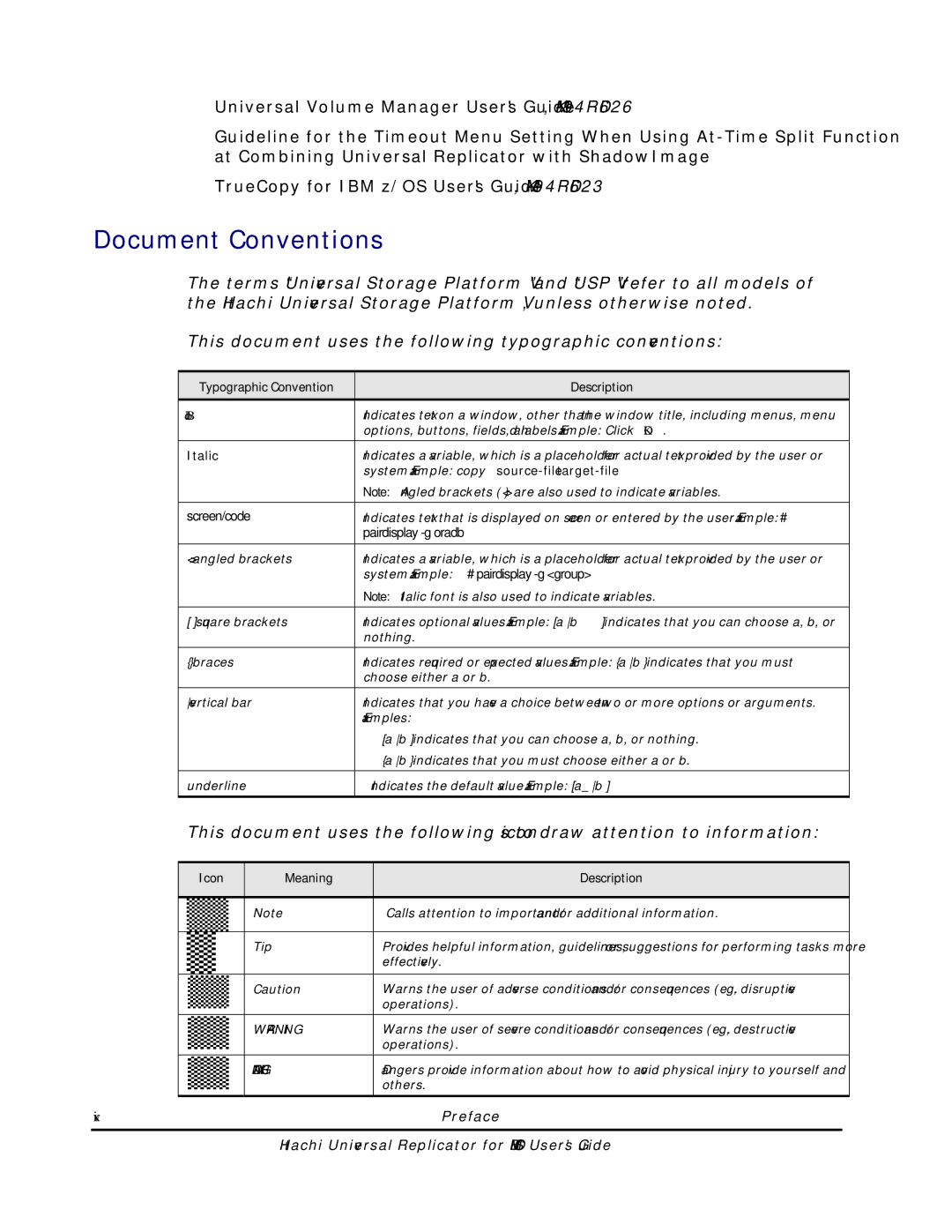
•Universal Volume Manager User's Guide,
•Guideline for the Timeout Menu Setting When Using
•TrueCopy for IBM z/OS User's Guide,
Document Conventions
The terms “Universal Storage Platform V” and “USP V” refer to all models of the Hitachi Universal Storage Platform V, unless otherwise noted.
This document uses the following typographic conventions:
Typographic Convention | Description |
|
|
Bold | Indicates text on a window, other than the window title, including menus, menu |
| options, buttons, fields, and labels. Example: Click OK. |
|
|
Italic | Indicates a variable, which is a placeholder for actual text provided by the user or |
| system. Example: copy |
| Note: Angled brackets (< >) are also used to indicate variables. |
|
|
screen/code | Indicates text that is displayed on screen or entered by the user. Example: # |
| pairdisplay |
|
|
< > angled brackets | Indicates a variable, which is a placeholder for actual text provided by the user or |
| system. Example: # pairdisplay |
| Note: Italic font is also used to indicate variables. |
|
|
[ ] square brackets | Indicates optional values. Example: [ a b ] indicates that you can choose a, b, or |
| nothing. |
|
|
{ } braces | Indicates required or expected values. Example: { a b } indicates that you must |
| choose either a or b. |
|
|
vertical bar | Indicates that you have a choice between two or more options or arguments. |
| Examples: |
| [ a b ] indicates that you can choose a, b, or nothing. |
| { a b } indicates that you must choose either a or b. |
|
|
underline | Indicates the default value. Example: [ a b ] |
|
|
This document uses the following icons to draw attention to information:
| Icon | Meaning | Description |
|
|
|
|
|
| Note | Calls attention to important and/or additional information. |
|
|
|
|
|
| Tip | Provides helpful information, guidelines, or suggestions for performing tasks more |
|
|
| effectively. |
|
|
|
|
|
| Caution | Warns the user of adverse conditions and/or consequences (e.g., disruptive |
|
|
| operations). |
|
|
|
|
|
| WARNING | Warns the user of severe conditions and/or consequences (e.g., destructive |
|
|
| operations). |
|
|
|
|
|
| DANGER | Dangers provide information about how to avoid physical injury to yourself and |
|
|
| others. |
|
|
|
|
xiv |
| Preface | |
